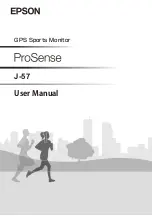
Preparing for heart rate and apnea monitoring 51
other electrically conducting parts when electrodes become de-
tached during monitoring.
Attach the electrodes only to intact areas of skin.
Secure the electrodes and cables so that they cannot harm, strangle,
or be swallowed by the patient. Always lay the patient cable at a
safe distance from the patient’s head and neck. Lay the patient cable
when monitoring small children inside their clothing so that it exits
at the foot. On larger children and adults you can, for example, lay
the patient cable so that it exits between the trousers and pullover.
Place the gel-coated side of the electrode on the chosen site and
carefully press it several times for a good contact.
New electrodes may be reattached several times. Peel them gently
from the skin starting at the edge.
When disconnecting the electrodes from the patient cable, do not
pull on the electrode’s cable. Pull the plug only.
If necessary, secure the cable with an adhesive strip. The skin should
be dry and free of oil and grease.
Make sure when attaching and securing the patient cable that it
cannot kink. Kinking can cause damage.
Do not pull on the cable: this is unpleasant for the patient and in
addition can damage the electrodes.
Summary of Contents for VitaGuard VG2100
Page 1: ...VitaGuard VG2100 Apnea and Heart Rate Monitor Operating instructions...
Page 2: ......
Page 4: ......
Page 10: ...Table of contents...
Page 111: ...Evaluating stored data on a PC 111 Fig 72 VitaWin register Events in graph form...
Page 122: ...122 Table of figures...
Page 123: ......















































